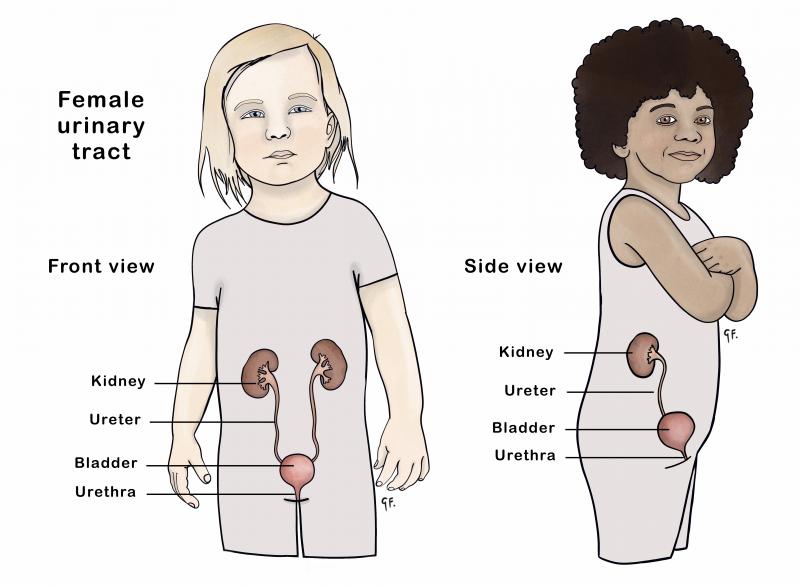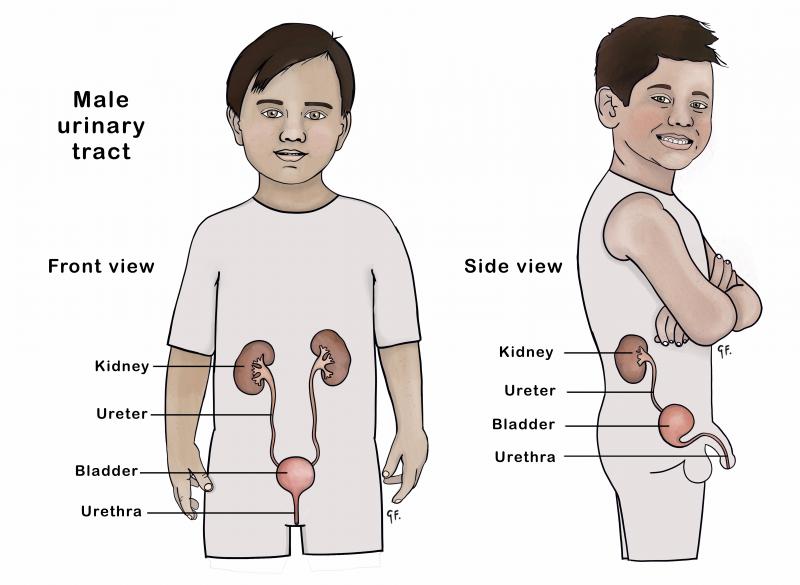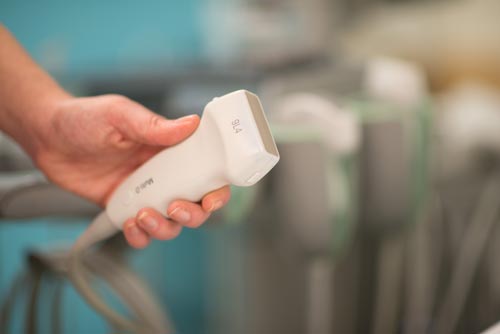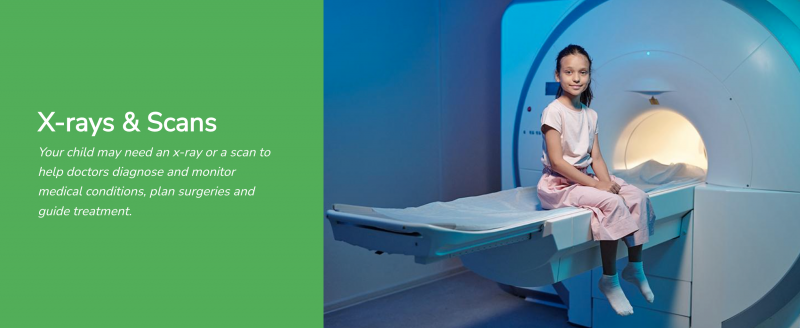Renal Ultrasound
Renal Ultrasound
Ultrasound is very useful for looking at soft parts of the body such as the kidneys and bladder.
Key points about renal ultrasound
- ultrasound uses sound waves rather than x-rays to create images of an object
- ultrasound is very useful for looking at soft parts of the body such as the kidneys and bladder
- all babies under 12 months of age with their first urinary tract infection (UTI) should have a renal ultrasound
What is an ultrasound?
An ultrasound uses sound waves rather than x-rays to create images of an object. These images are called scans.
What is a renal ultrasound?
A renal ultrasound is a scan of the urinary tract (urethra, ureter, bladder and kidneys).
What is the urinary tract and how does it normally work?
The urinary tract is the kidneys, ureters, bladder, and urethra.
The kidneys filter and remove waste and water from the blood to produce urine. The urine travels from the kidneys down 2 narrow tubes called the ureters. The urine is then stored in the bladder.
When your child does a wee, urine flows out of the body through the urethra, a tube at the bottom of the bladder. The opening of the urethra is at the end of the penis in boys and in front of the vagina in girls.
Front and side view of the female urinary tract.

Front and side view of the male urinary tract.

Why is my child having an ultrasound?
Ultrasound is very useful for looking at soft parts of the body such as the kidneys and bladder. These soft parts do not show up well on x-ray.
Your baby or child may have a renal ultrasound to:
- find out if there are any blockages in the urinary tract
- check if their kidneys are normal in shape, size and position
- look at the blood vessels in the kidneys
Babies under 12 months of age with their first UTI (urinary tract infection) should have an ultrasound scan of their urinary tract.
Where does a renal ultrasound happen?
The test will be in the radiology department of your hospital, or at another radiology centre.
What happens during a renal ultrasound?
Aim for a full bladder
The ultrasound gives the best pictures when the bladder is full.
If your child is toilet trained, try to get them to hold on and not wee for 2 to 3 hours before the ultrasound.
If your baby or child is not toilet trained, try to give them as much fluid as you can about 30 minutes before the ultrasound.
In the radiology department
Your child will lie on a bed in a darkened room. A sonographer (technologist) or radiologist (doctor) will put a little warm gel on your child's skin, over the area they're looking at. They will hold an ultrasound camera (transducer) and slide it over the gel on your child's skin.
A photo of a transducer.

Your child may have to change positions during the ultrasound to get the best possible images.
You can see the images on a screen during the ultrasound. These are recorded.
How does a renal ultrasound feel?
This is a simple and painless test, just like the scans that women have during pregnancy. Please reassure your child that it will not hurt.
How can I prepare my child for a renal ultrasound?
- bring comforters or any toys that will reassure your child
- a dummy (pacifier) for babies (if they normally suck on one) can be very soothing
See some suggestions about how to help your child manage their treatment
Many hospitals have play specialists, whose job it is to help explain these tests to your child. Play specialists use play to show your child what is going to happen and ways to help them cope.
You will be able to stay with your child for the test and your presence can help reassure them.
Are there any side effects from a renal ultrasound?
There are no harmful effects from ultrasound.
How do I find out the results of the renal ultrasound?
The radiologist (specialist doctor) will look at the ultrasound and send a report to your doctor.
In some cases, the results will be available straight after the ultrasound.
See more KidsHealth content on x-rays and scans
This page last reviewed 12 July 2024.
Do you have any feedback for KidsHealth?
If you have any feedback about the KidsHealth website, or have a suggestion for new content, please get in touch with us.
Email us now
